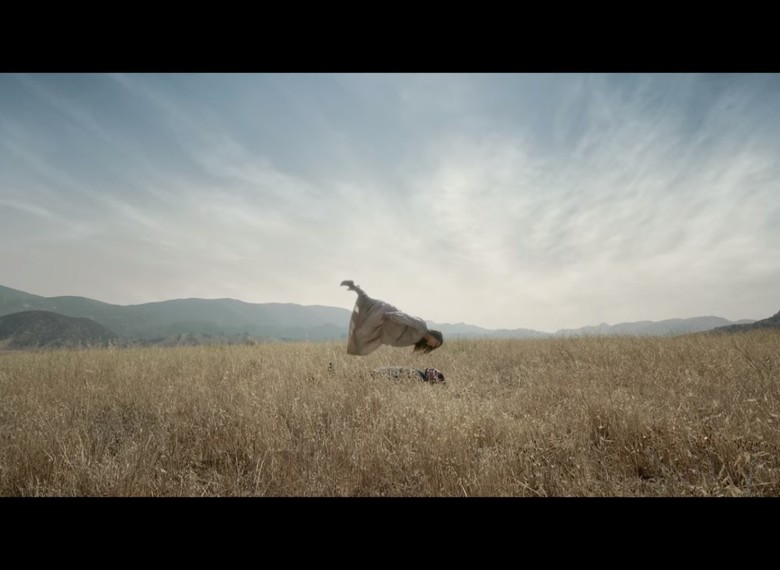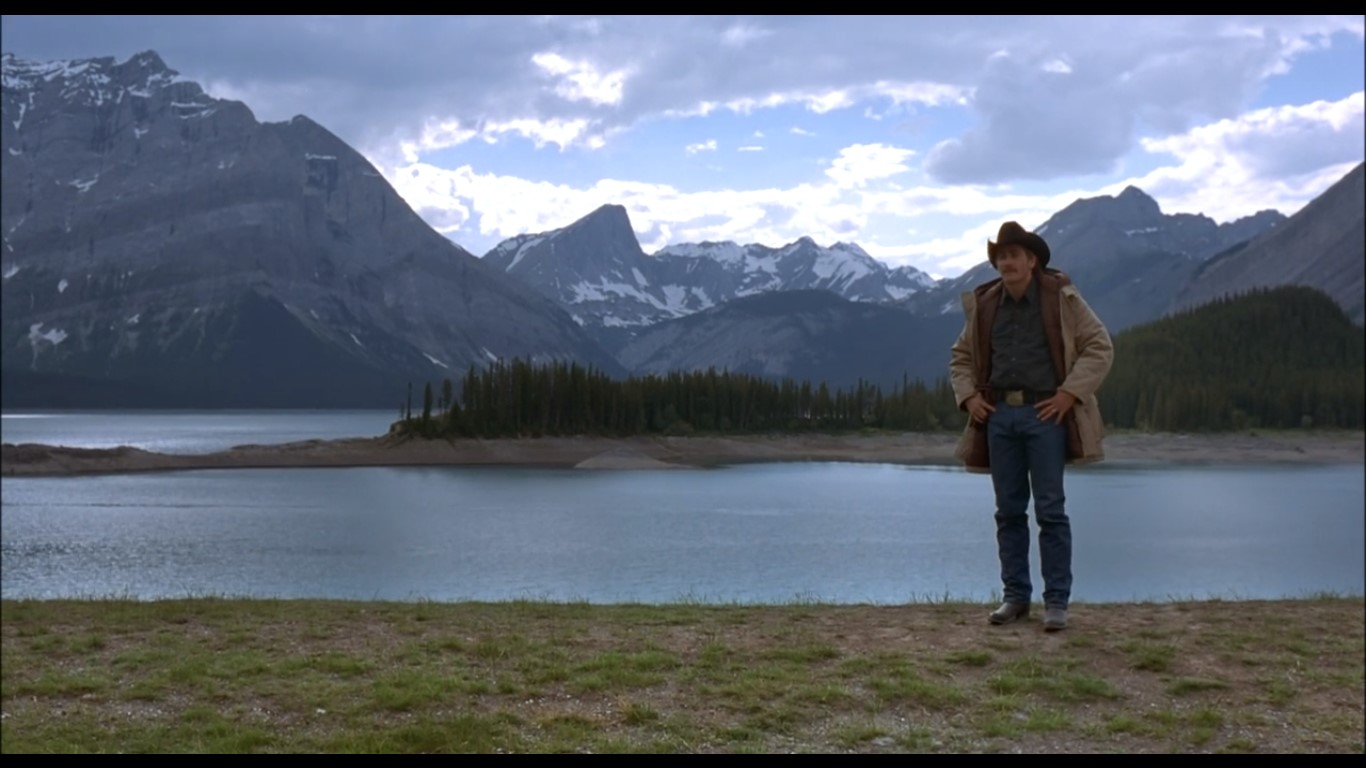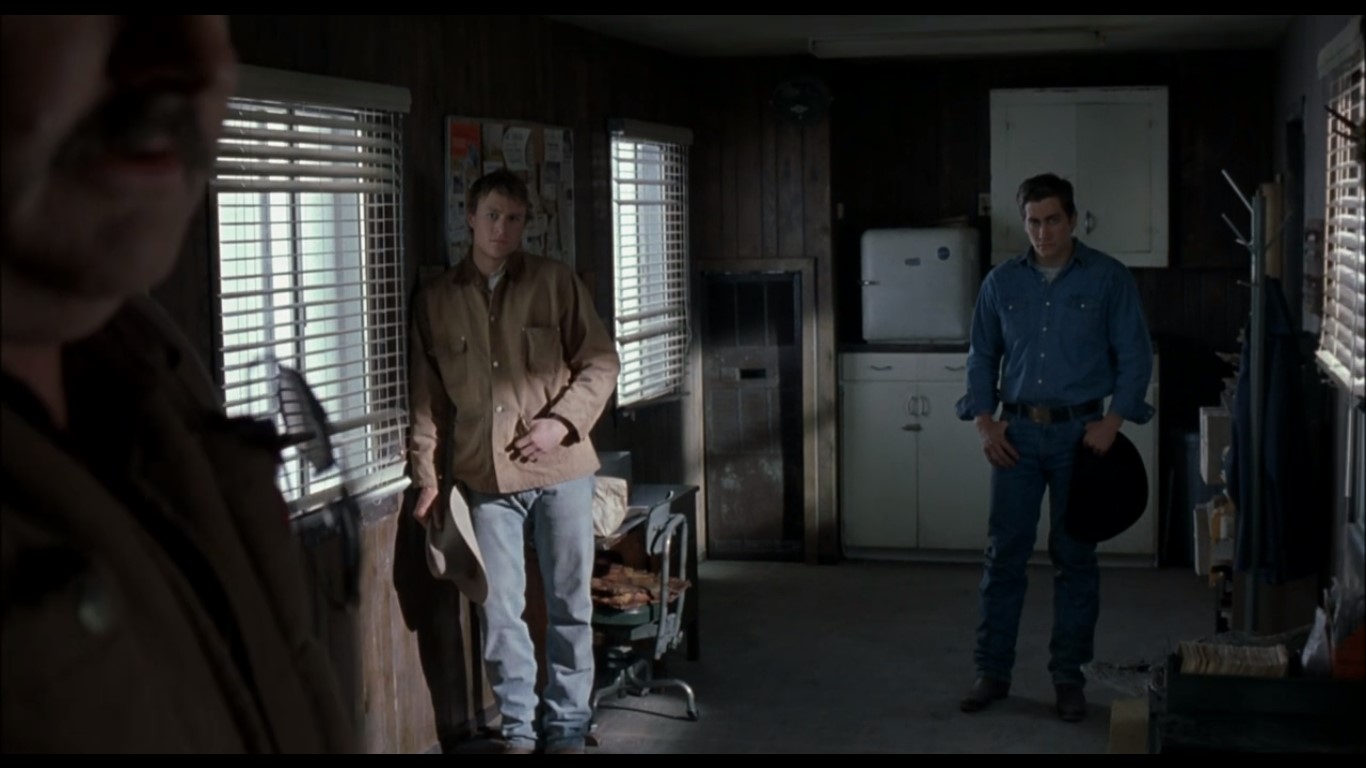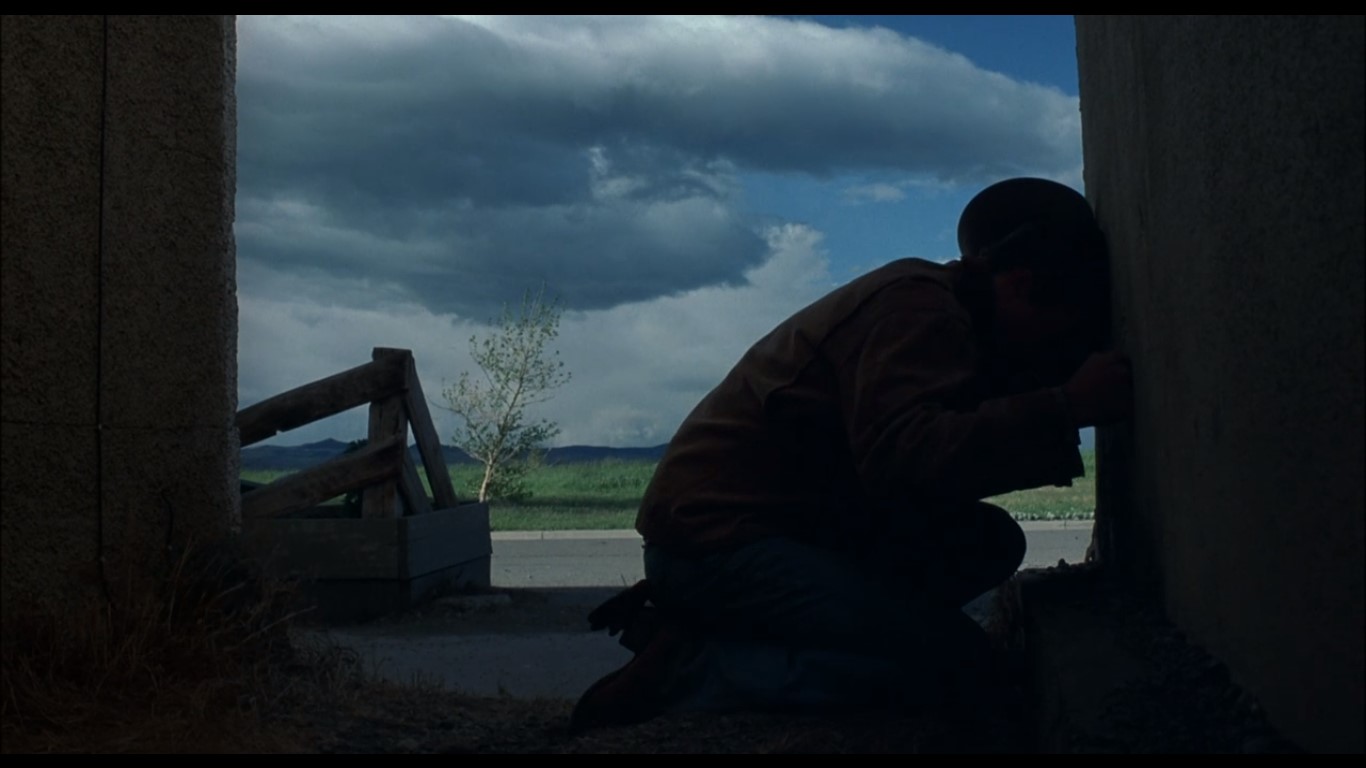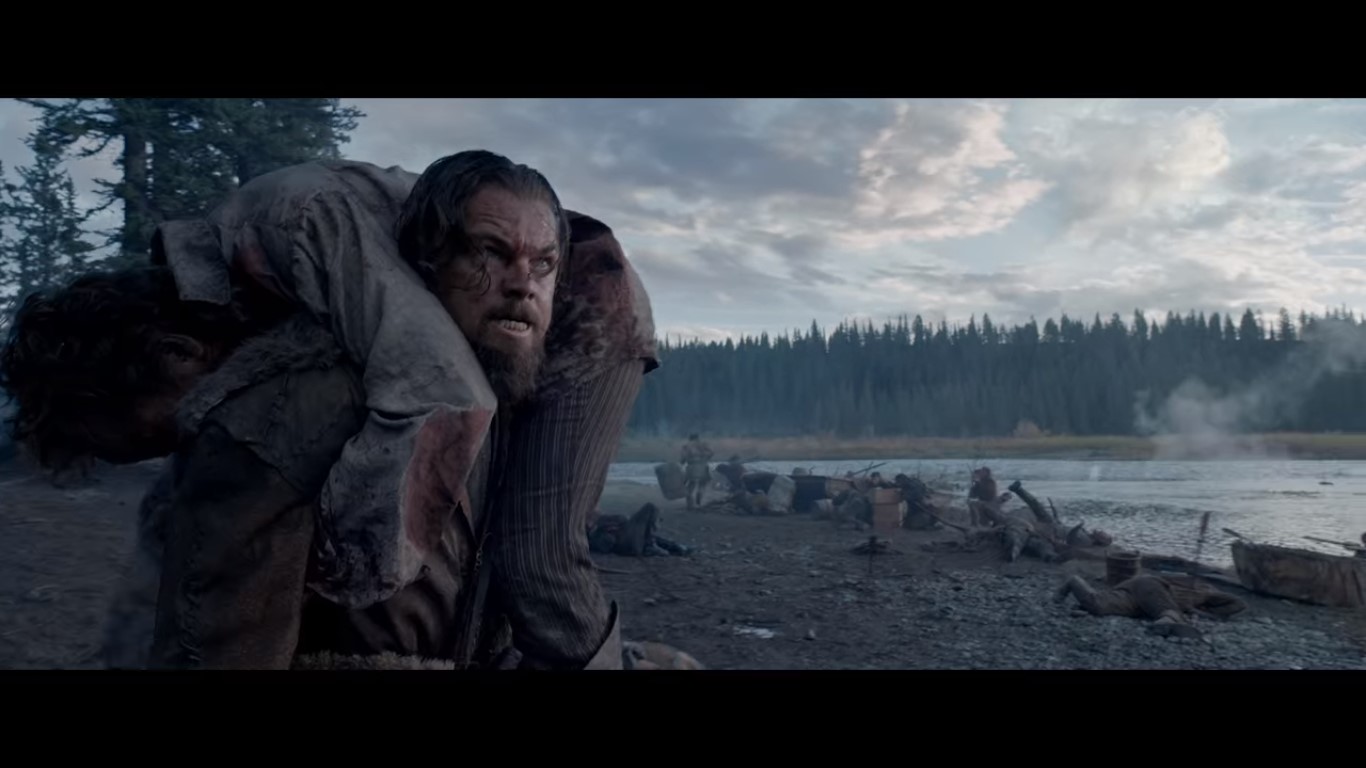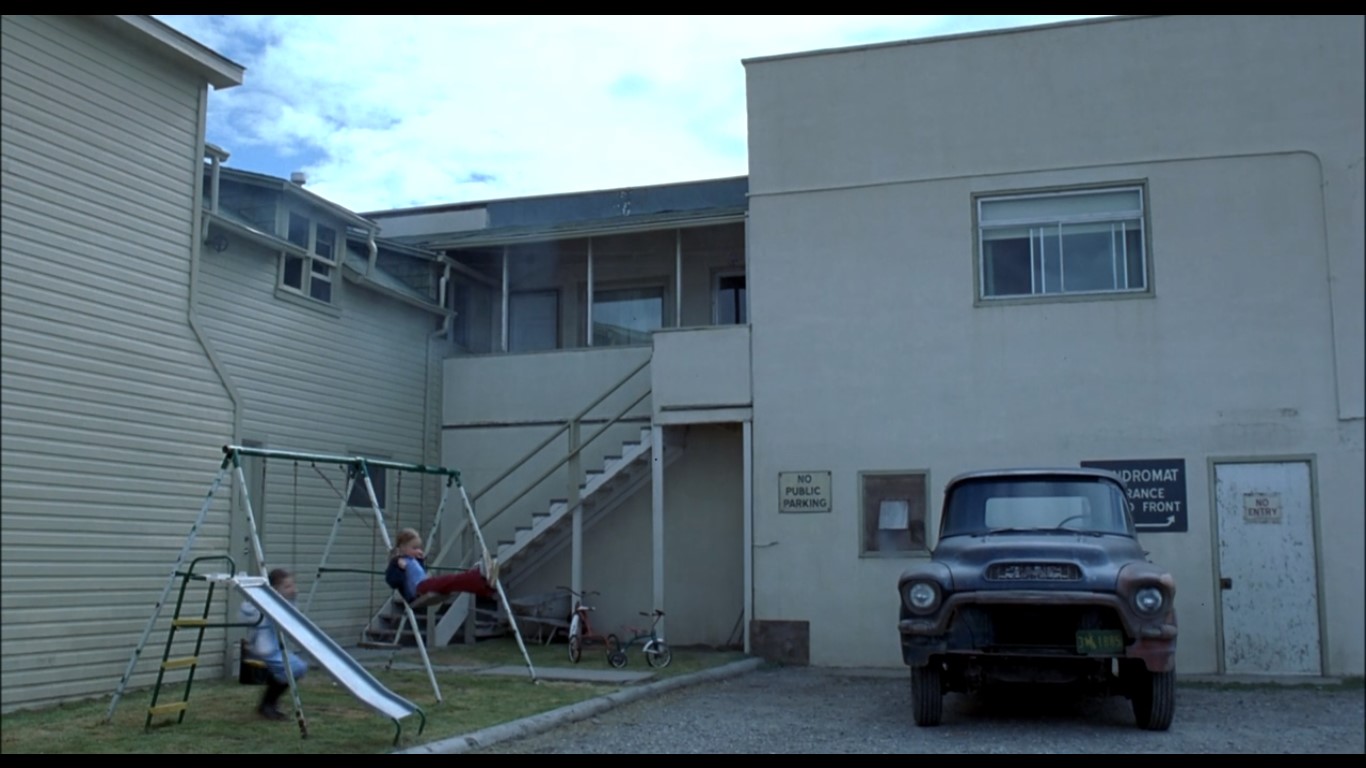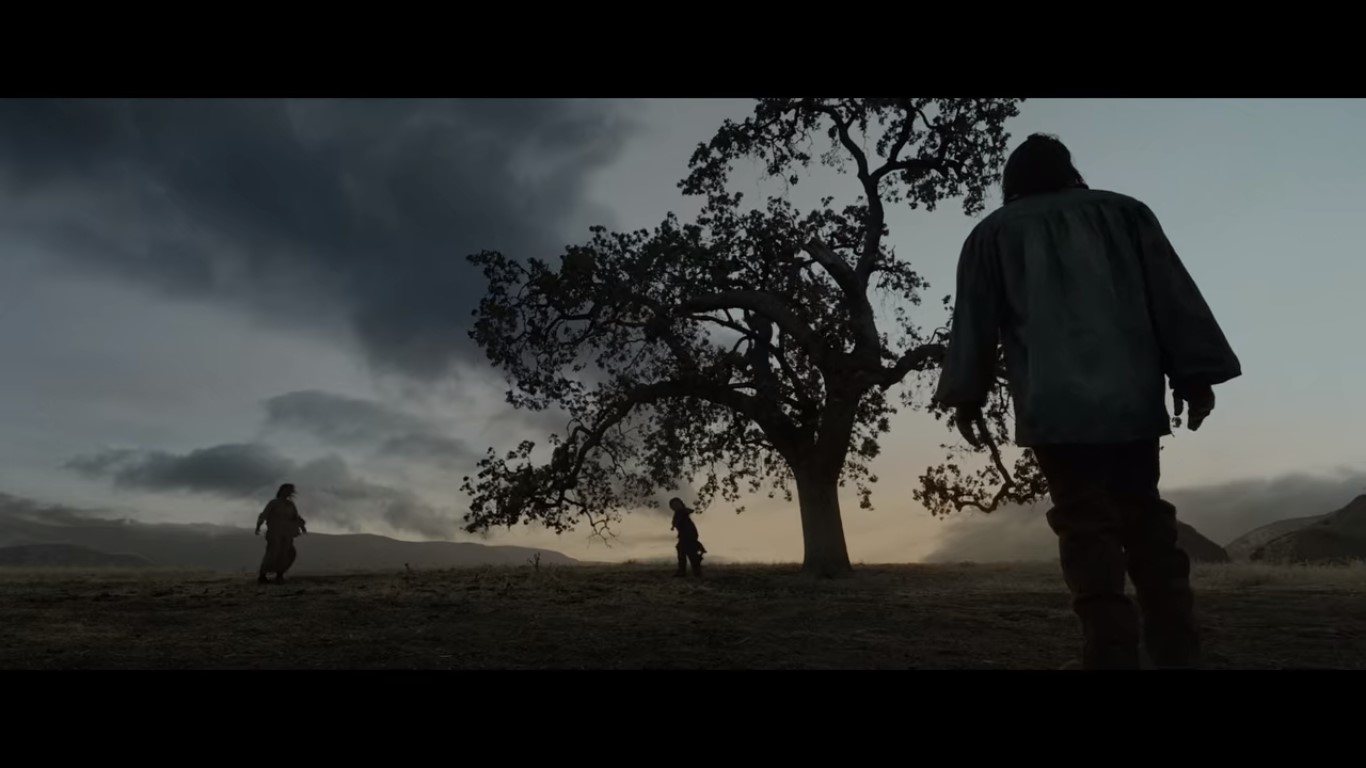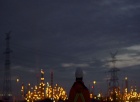The province of Alberta has been mined by the film industry for its stunning shooting locations for decades. The commonality amongst otherwise diverse films is the characterization of Alberta as somewhere completely different.1Take Clint Eastwood, whose revisionist western Unforgiven used footage from Alberta to move geographically to the equally tangible Wyoming (and backward in time to 1880). Or Christopher Nolan, who passed Western Canada off as a different planet in Interstellar and as a third-level dream state in Inception.
The cinematic trick of using shooting locations as stand-ins for other places has been a historically popular one. Getting spectators to forget the setting ever used to be Alberta is a natural component of this creative process. This obfuscation functions as a reminder that what we are watching has been made, painstakingly labored over, and artistically crafted like a brush being taken to canvas or a pen to paper. This mode of production is less obtrusive when the final product is artificial by design, as with science fiction, but the debate is not so easily resolved for naturalist works predicated on believability. A particularly insightful case in point is the pair of films Brokeback Mountain (2005) and The Revenant (2015).
Brokeback Mountain, the sweeping romance of the fictional Jack Twist (Jake Gyllenhaal) and Ennis Del Mar (Heath Ledger), turns its mountainous Alberta backdrop into the American West from 1963-1983. It is directed by Ang Lee and written by Larry McMurtry and Diana Ossana, but adapted from a short story by Annie Proulx.2The Revenant is a visceral study of Hugh Glass’ survival after being mauled by a grizzly bear: a true story with Leonardo DiCaprio at its centre. Writer and director Alejandro González Iñárritu’s part-dramatization of the 2002 Michael Punke novel reimagines Alberta as the Dakotas in 1823. Each film self-identifies as realist, emotionally truthful storytelling. Lee’s, this year celebrating its fifteenth anniversary, remains a pivotal moment for queer cinema. The Revenant, turning five, is as firmly cemented in the contemporary canon as Iñárritu’s other works.
In Brokeback Mountain, the setting is the third protagonist alongside Jack and Ennis. Their fleeting encounters in the Wyoming mountains transform their shared desire into love from their first summer together, which becomes responsible for marriages, families, and lives falling apart. Equally, setting in The Revenant transgresses its role as narrative framework for the plight of frontiersman Hugh Glass. By design, Iñárritu’s cinematographically intense, performatively taxing character piece is less dynamic than Lee’s film in terms of locale. The largely one-man show gives vulnerability, desperation and resilience centre stage, documenting Glass’ return to health and home as he seeks vengeance for the death of son Hawk (Forrest Goodluck). Iñárritu characterises the Canadian landscape as necessarily savage and destructive as Glass’ experiences. In contrast, Lee uses Alberta to create a sense of serenity and tranquillity.
Usually characterized by extreme long shots, this visual identity holds Brokeback’s first act together. Spliced between the long shots are campfires, quiet bars, and cluttered interiors. The film opens with a truck traveling along a winding road, minuscule against a mountainous backdrop as the sun rises. The truck gets larger as Rodrigo Prieto’s camera patiently zooms in to pinpoint protagonist Ennis Del Mar. The film cuts, confirming that he was in the truck’s passenger seat, arriving in Wyoming for a summer of work herding sheep. Waiting outside employer Joe Aguirre’s office (played by Randy Quaid), hidden beneath a black Stetson in juxtaposition of Ennis’ white cowboy hat, is Jack Twist.
After another cut, they stand in front of a messy desk, not saying a word to one another. Ennis leans against a wall with hat in right hand, Jack in the middle of the room, hat in left. The pair only speak as they return outside, now at the runtime’s seven-minute mark. Jack suggests how “Since we’re gonna be working together, I reckon it’s time we start drinkin’ together.” It’s an appropriately hushed, spatially claustrophobic introduction before the film and these personalities move outward. They learn how to express their feelings for one another simultaneous to Lee’s expansion of the landscape, allowing it to become more than just a two-dimensional setting.
Conversely, The Revenant begins almost on top of its central character rather than locating him from a bigger picture. Emmanuel Lubezki’s camera pans slowly over Hugh Glass, wife and child sleeping, as the film introduces Glass’ voiceover: “It’s okay son… I know you want this to be over.” It cuts to a short montage echoing the graceful, quasi-spiritual sweep of Lubezki’s collaborator Terrence Malick:3wife and son play by a tree beneath an apocalyptic sky, the bloodied son then stands facing the camera as his house burns behind him. If Lee’s opening scene functioned to specify his narrative focus, introducing a setting only to immediately look more closely; Iñárritu’s does the opposite, giving a contextless domestic situation before attaching it to a background.
The transformed Albertan landscape is given fleeting snapshots in these opening moments, unrecognizable on account of the little time spent on them as well as the extent of the transformation. Brokeback fixes on its setting for far longer, giving no instant, specific detail but lingering on its visual makeup for long enough to invite guesswork. With Ennis’ arrival at the office by daylight, it’s even plausible to associate the skies and mountains with Canada. Lee’s manipulation of this expectation comes with the revelation that this is Wyoming, dispelling any association without prior knowledge of the film’s shooting location.
This treatment of setting mirrors the disparity between interiority/exteriority within Ennis. As the fact of the visuals belonging to Alberta betrays what the fiction is telling us as we see them, Ennis too feels one thing but will express this as something contradictory. Brokeback devotes its first 40 minutes to this struggle, which isn’t so debilitating for Jack. The more campfire conversations, the more time isolated from anybody or thing but the sheep (and a visit or two from Joe Aguirre), the more Jack begins to wear his feelings for Ennis on his sleeve. Ennis is more often a man of few words, always allowing Jack to initiate the conversation. The trait might pertain to Ennis’ background and upbringing, suggested when he informs Jack, “You might be a sinner, but I ain’t yet had the opportunity.” This habitually modest worldview is carried over into the film’s second act, where the security of a straightforward, nuclear family behind four walls becomes Ennis’ reality. He and long-time fiancée Alma Beers (Michelle Williams) marry and have two daughters; Jack meanwhile meets, marries and has a son with rodeo rider Lureen Newsome (Anne Hathaway).
As if to accentuate the unfamiliarity of Jack’s spontaneity and rebellion, he and Ennis’ first sexual experience together is rushed and confused. Its foreplay is frustrated, almost animalistic wrestling, which becomes a motif. On one occasion, Joe witnesses their affair through binoculars: a voyeuristic symbol reflecting our role in this storytelling process. On another occasion, the topless wrestling becomes violent. Jack draws blood as the pair repeatedly throw one another into the mud: an image stretched to feature-length in Francis Lee’s terrific God’s Own Country, released in 2017.4
Frustration is the only constant between Ennis’ two ontological spaces. He is otherwise unable to harmonise internal clarity with external expression of his sexuality, an incongruity which is given a physical space with the final shot of this first summer. Ennis, punching a wall in a narrow alleyway, snarls through choked sobs “What the fuck are you looking at?” at a concerned passer-by. As he does this, Jack drives away into the comparatively wide, open road beneath the Wyoming/Alberta mountains.
The Revenant places a similar emphasis on incapacitation, but the source of Glass’ difficulties is the active danger of the narrative environment. Gone is the deceptive calm of landscapes, lakes, and mountains as a stage for suppressed feeling; here, the physical world is as openly tortured and damaged as Glass’ psyche. Alberta becomes something unpredictable and everchanging: a clear blue sky becomes replaced by a downpour of rain, or muddy terrain will become glistening snow. Within this framework, Glass’ character is designed with the same multivalence: overwhelming grief turns to acceptance, which turns to spiritual guidance. This occurs in the case of his wife’s mysterious death (revealed through glimmers of flashback) as well as his son’s demise (which plays out in the narrative present, becoming responsible for the film’s path of vengeance).
After the vicious bear attack at the 25-minute mark, Glass’ subsequent inability to articulate thoughts and feelings shifts responsibility to the natural world around him. As in Brokeback, setting begins to function as an authoritative force in place of characterological agency. Iñárritu’s film carries over a similar aesthetic from previous work Birdman (2014),5where Lubezki’s camera was willingly, mimetically complicit in giving the showbusiness machine the unrelenting illusion of ‘single take’ (as Alfred Hitchcock and Gaspar Noé did before him, as Sebastian Schipper and Sam Mendes have done since).6
Alberta becomes something unpredictable and everchanging: a clear blue sky becomes replaced by a downpour of rain, or muddy terrain will become glistening snow.
The Revenant winds through trees and into waterfalls, limiting our access as Iñárritu chooses and extending beyond the fields of vision of the characters. As a result, our engagement with the film relies on a similar level of accepted inauthenticity to Brokeback. Iñárritu, like Lee, ensures we don’t forget that we are watching something; for the former this manifests as immaculate choreography, for the latter as characters tasked to maintain lies about fidelity and sexual identity. In any case, the final product on this side of the camera reflects a very deliberate choice to change the name of the location shot on the other.
Both films are about the inherent tensions of difference and diversity, between truth and lies – a natural fit for works that pass Western Canada as elsewhere in North America, each during a different century to their time of release. These films are also about the difficulty of embracing difference, as seen in the conflict between Glass’ team of white traders and their Indigenous Arikara neighbors, but also in Ennis’ self-denial. The morning after their first time together, he and Jack speak in ellipses. “You know I ain’t queer,” Ennis declares, to which Jack responds: “Me neither.” As such, Prieto’s camera is reluctant to sexualize the frame, replicating the subdued, secret terms of their relationship. In a scene where Jack rings clothes dry in a stream, nudity is off-limits: we see nothing, despite him being down to just boots and hat. Only by their second time together does the film broaden the understanding of their feelings into aesthetic; this scene is shot with patience, light, and emphasis on Gustavo Santaolalla’s stirring musical score. It’s the antithesis of their frantic first time in the dark.
But as we progress into Brokeback’s second act, the promise of Ennis and Jack’s shared desire is persistently unfulfilled. Distractions come in the form of crying babies and shouting matches through the walls of Ennis and Alma’s home,7while Jack returns to the mountains and is turned away by a suspicious Joe, who ostensibly knows what they did last summer. Jack moves to Texas and frequents lively rodeo bars, the opposite kind to those he and Ennis would spend time in. Act two is antonymic of the first in general. Now, we experience confined interiors, a whole palette of colour, diegetic music, and crowds. Key episodes include Ennis starting a fight at a family firework display, and Jack and Lureen’s first dance together in a busy bar.
These consistent distractions delay Ennis and Jack loving one another, but don’t prevent it. The pair share sporadic getaways to Brokeback Mountain, because as Jack points out during an argument: “Everything’s built on that! That’s all we got boy, fuckin’ all.” Jack clings onto the hope that they will escape their separate lives for good and buy a ranch together, but moving into act three this becomes an increasingly futile dream. Ennis divorces and Jack’s marriage declines, yet this can’t sever family ties nor alleviate the perpetual fear he’s lived with since his sexual awakening. Ennis says to Jack: “You ever get the feelin’… I don’t know, er… when you’re in town and someone looks at you suspicious like he knows? And then you go out on the pavement and everyone’s looking at you like they all know too?”
The entire foundations of their separate lives are as false as the searing image of Ennis and Alma’s trailer home, a perfect “L” shape aligned with a small patch of grass populated by a rusty swing frame. Lee uses other settings with a different purpose to the mountains, designing locations that deliberately look like sets, reflecting his self-deceptive character arcs in his visual language. Here, the inauthenticity theme can be discerned at surface level; the mountains never pretend to be Alberta either, but the distinction is only clear because the dialogue tells us so. As an image, the film’s postcard Wyoming is somewhat interchangeable with the real-life Alberta. The closer vicinity to sameness is tied to the fact that scenes set here are as close as Ennis and Jack ever are to living the true versions of their lives.
Each leans heavily on Alberta’s location-setting dichotomy, a central component of the filmmaking process that isn’t often given such narrative attention within the cinematic fiction.
The Revenant, on the other hand, rests on the consistent unfamiliarity of its narrative situation. Comprised of Captain Andrew Henry (Domhnall Gleeson), John Fitzgerald (Tom Hardy), Bridger (Will Poulter) and others, the team’s fur trading expedition is thrown completely off course after what happens to its leader. Becoming a power struggle between the commanding Henry, manipulative Fitzgerald and impressionable Bridger, the film devolves into circumstantial unpredictability to match the hindrance of various weather changes.
The group clash over whether to leave Glass behind, whose immobility is slowing the journey down. When they eventually do, Glass’ survival is determined by his ability to successfully adapt to the changing setting. At one point this necessitates crawling into a carcass to endure the cold, because Iñárritu’s film has carried over into autumn and now winter – unlike Brokeback, which pivots around the reliable serenity of the bright, beautiful summer.
Despite its emphasis on seasonal change, the film is not as linear as Brokeback, whose structure revolves around distinctly episodic jumps forward in time. The Revenant spans months rather than years; the interruptions of its linearity instead come in the form of flashbacks. Often, these extend the surrealist sensibility introduced in the opening scene: various sequences where Glass receives spiritual guidance from his dead wife, a dream in which Glass is reunited with his son (just for the film to cut to him hugging a tree), another imagined situation where his wife hovers above him as he sleeps, the sky glistening, the terrain golden. It’s the formal representation of Glass’ belief system – as he elucidates after reclaiming his ability to speak: “Revenge is in God’s hands. Not mine.”
Fitzgerald’s understanding is that the brutality of the world around them can only justify atheism: “In that moment, he told me, he found God. And it turns out, that God, he’s a squirrel. Yeah, big ‘ole meaty one.” However, Glass’ quest for spiritual acceptance appears to be confirmed in the film’s final moments. After exacting revenge on Fitzgerald for his son’s murder, he is visited one final time by the ghost of his wife. She smiles and walks away, leaving Glass to bleed out in the mountains to an uncertain fate. It’s the assured calm and internal harmony that we’ve watched him spend the past two and a half hours searching for. It’s the confirmation that his wife and son have passed onto a better place.
By the time it finishes, Iñárritu’s film has become about suspending disbelief and finding solace in something unrestrained by the concrete or the everyday. The understanding at the heart of Brokeback is similar, even if its moment of catharsis doesn’t wander so freely into the spiritual or abstract. After receiving news of Jack’s passing, followed by the news that his now nineteen-year-old daughter is engaged, Ennis goes to the closet where his and Jack’s clothes hang together, with a (literal) postcard of Brokeback Mountain hanging tacked above it. He stares at it for a moment, memories visibly coming flooding back to him even if Lee doesn’t explicitly cut to any. Tears in his eyes, he murmurs: “Jack, I swear…”8
The parting gift of Brokeback is something underpinning its 130-minute runtime: the pain of not embracing the fact of difference. Or, on the characters’ own terms: the reductive label “fishing buddies.” The Revenant ends more hopefully, because only then does a different plane of existence (where Glass will be reunited with his family) specifically present itself. Iñárritu’s film is a journey towards discovery whereas Lee’s occurs in the first act. For his characters, it’s a matter of letting what has been found take over their lives; for Glass, this is the only thing he’s known since the film first introduced him.
Attaining this thing – its characteristic abstraction, its inauthenticity – is the natural focal point for two films that build the creative inevitability of turning fact into fiction into their philosophy. Each leans heavily on Alberta’s location-setting dichotomy, a central component of the filmmaking process that isn’t often given such narrative attention within the cinematic fiction. The unparalleled beauty of a popular filming location such as Alberta can only fit neatly at the centre of this kind of debate, not least for the ambivalence that today’s most important directors treat it with. Western Canada’s aesthetic power is a special one, able to mutate into the idyllic, twentieth-century Wyoming mountains or the destructive, nineteenth-century Dakotas with equal conviction and impact. For this, it must be treasured.

